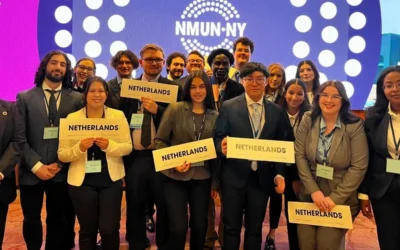Once upon a time, calling oneself a witch was a dangerous business. From the Spanish Inquisition to the Salem witch trials, openly identifying as a witch comes with a rich history of controversy, violence, and oppression. But it wasn’t always this way, and in North America at least, more and more people are becoming entranced by the witch aesthetic, as much as the lifestyle.
In 2014, the Pew Research Centre concluded that 0.4 percent of Americans, or between one and 1.5 million people, identify as Wiccan or Pagan. For comparison, that’s more than double the population of self-identifying Orthodox Jews in America (0.5 million). While these figures don’t wholly represent the number of witches in America — one can be Wiccan and not a witch, or vice versa — they nonetheless suggest an ever-increasing interest in both the spiritual beliefs and practices associated with witchcraft.
Social media, too, reveals just how much visual appeal there is for the once-maligned identity. On Instagram, tags like #witch yield over nine million results, and even #witchcraft has almost 3.5 million. On Pinterest in 2018, pins relating to witchcraft were up by almost 300 percent among Generation Z users alone, according to Glamour. Gone are the days of secrecy and denial — today’s witches are loud and proud.
“What makes magic magic is the intention behind it, regardless of what tools are being used.”
Paint Fremmerlid, genderqueer chaos witch, Edmonton
For Katie Karpetz, owner of TheWitchery.ca, an online shop devoted exclusively to witch-related products, this increased ownership of identity is something she sees reflected in her own experience.
“I would never have told you my real name, even five years ago,” she says during a phone interview.
Laura Hibbert, chairperson of the temple board and outreach representative for the Congregational Wiccan Assembly of Alberta (CWAA) echoes this sentiment: “It’s getting easier, a lot easier,” she says of CWAA members expressing themselves while being involved in the Edmonton community.
While no small part of this growing comfort is due to the awareness and public relations efforts made by the CWAA, we can’t discount how much of an impact social media has had on destigmatizing witches in recent years. Just as popular media like that of Hollywood first perpetuated some of the enduring harmful stereotypes — pointy hat and warty nose, anyone? — modern witches are using selfies and tags as a way to reclaim their identity and redefine how they are perceived. It’s not the first time being witchy has been trendy, but it certainly is the first time that witches across the globe have been so public, and so profitable.
“Commercialization has made being a witch cool,” Hibbert says, which correlates with her observation that the CWAA is “getting a lot of new members.” But, there is a catch. “Social media is a great thing, but
For Paint Fremmerlid, a local genderqueer chaos witch, this issue of realness is complicated by an increasingly capitalist approach to witchcraft and the more general witch aesthetic that has become mainstream. “I definitely was wary of identifying as a witch sooner,” he says, attributing that hesitance to disenfranchisement with the elitism and “idealized scholarly structure” of magic schools.
Given that witchcraft is an earth-based religion focused on maintaining harmony with nature and harnessing the natural energy at work in the universe, it’s not hard to see Fremmerlid’s point. Of those several million posts on Instagram pertaining to witches and witchcraft, a large percentage of them are product related. Candles, crystals, jewelry, clothing, tarot cards — there’s definitely a coherent pattern in what we’ve come to label as “witchy,” and while all that a witch might need would once have been handmade and sourced directly by the witch herself from what she had available, these days, all of it and then some is available, for a price.
“I think the media is attempting to commercialize the practice with expensive tools, altar items, et cetera,” says Fremmerlid, making witchcraft financially “inaccessible and seem more like an esthetic than a spiritual practice.” This emphasis on materialism and ‘grammability also seems to be in direct contradiction with the premise of giving back to nature whenever something is taken. For Fremmerlid, this is a serious concern: “Commodification is a threat to magic much like commodification of anything is a threat at this point. There are people who do fair exchanges of magical tools and resources, but at a high commercial level it just doesn’t sit right with me.”
“What makes magic magic is the intention behind it,” he explains, “regardless of what tools are being used.”
For Karpetz, running a business that caters to the needs and desires of a witchy clientele has been something of a balancing act. Like Fremmerlid, she acknowledges that many products in and of themselves are not necessary in order to practice magic,
“but ultimately (they’re) a focal point” that assists with channeling energy. While Karpetz welcomes the increase in depictions of witches in the media, claiming: “For me, anything that promotes it, I’m down with, just because the people that need to find it or do want to find it will be able to do so easier then.” She also concedes that the benefits of exposure don’t outweigh the problem of mass marketing and production. “If it’s being poorly extracted or harvested, that’s no good either.”
At The Witchery, Karpetz combats the commodification of witch products by trying to be as ethical as possible in her sourcing practices. “When I make stuff, I’m very (careful) and try to only take what I need … I don’t want to waste what I’ve taken,” she says. Towards this end, she purchases her sage supplies from a group of local Indigenous growers, ensuring that they profit directly from her sales. The use of sage, and white sage in particular, as part of witchcraft has become increasingly controversial and is often cited as an act of cultural appropriation, but Karpetz notes that this hasn’t stopped witches new and old from seeking out the herb. “I recognize that
The heightened consumerism speaks to just how materialistic our culture, even our spirituality, has become. But it also ties back into the superficiality of basing an identity purely off visual appeal. As with any wave of popularity, there will be those who discover they’re in it for the long haul, and there will be those who enjoy the ride temporarily. Both Karpetz and Hibbert are pleased with the opportunity for the witch community to grow as a result of this newfound popularity, but Hibbert makes a good point about the risk of oversaturation.
“I don’t want to see (Wicca) become a thing where people just make money off it. I would love to be able to walk down the street and see more people be comfortable saying ‘Hey I’m a witch,’ but any religion that gets too big can get greedy,” she says, adding that even with positive portrayals in media, there is “definitely still a risk of misrepresentation.” In the past, negative representations of witches in Hollywood and other media resulted in their vilification, but witches face a similar problem with the image currently being promoted — just because they’ve been placed in a more mainstream light doesn’t mean they’re being portrayed any more accurately.
Hibbert, Fremmerlid, and Karpetz have all come to terms with how easily public perception is informed by media, but there is still work to be done, perhaps doubly so for those new witches just entering the scene. “You need to read all the time,” Karpetz insists. She frequently receives requests from people asking to be taught how to be a witch — a request for which there is no one-size-fits-all answer. Though certain rules do apply, witchcraft and Wicca are both very individualist practices, and for Karpetz this means people need to put the effort into finding where they fit. “Your path is different and the stuff that you’ll connect with is different. People need to read. That’s it. That’s my number one recommendation,” she says.
A little research can go a long way when trying to avoid a faux pas, or worse. While Karpetz is adamant that magical mishaps are much less common than horror movies would have us believe, witchcraft can and does go wrong sometimes. “Taking control of your own power and asserting your own will can go well and can go badly, just like any endeavor,” says Fremmerlid, adding, “There are risks to magic, for sure.”
As Halloween approaches and we are accosted by costumes and caricatures that focus so much on magical mispractice and malice, it is a good time to reconsider what we believe we know about witches, perhaps even taking Karpetz’s advice and doing some reading up on the subject. For those who are interested in witchcraft and want more than just social media as a source of inspiration, the CWAA hosts a public Open Circle on the second Sunday of every month (except August) at 6 p.m. at Ritchie Hall, 7727- 98 St. After all, the more one learns about witches, the more enchanting they become.





0 Comments